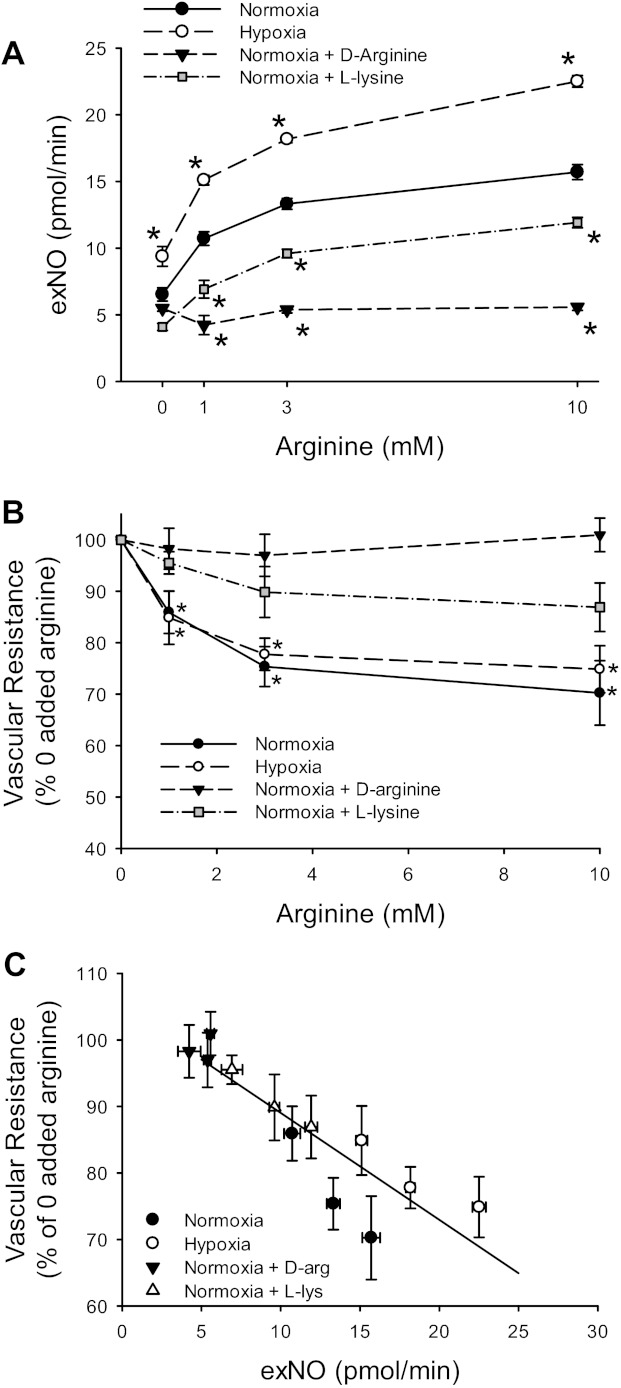Fig. 5.
l-Arg caused a concentration-dependent increase in exNO production that was dependent on l-Arg transport. A: exNO measured in isolated perfused lungs from N (n = 19) and CH (n = 12) rats with increasing concentrations of l-Arg. d-Arg was used in N lungs since it is not actively transported, and 30 mM l-lysine (l-Lys), a competitive inhibitor of l-Arg transport, was added in N lungs. *Different from N at the same concentration of l-Arg (P < 0.005). Two-way ANOVA using N and CH data showed a significant effect of both l-Arg concentration and exposure on exNO production (P < 0.001 for both). B: l-Arg caused a concentration-dependent decrease in vascular resistance. Vascular resistance is shown as a percentage of vascular resistance with no added l-Arg in isolated perfused lungs from A. *Different from no added l-Arg (P < 0.01). C: vascular resistance was negatively correlated with exNO production. The change in vascular resistance was plotted against exNO production (R = −0.89, P < 0.001).

